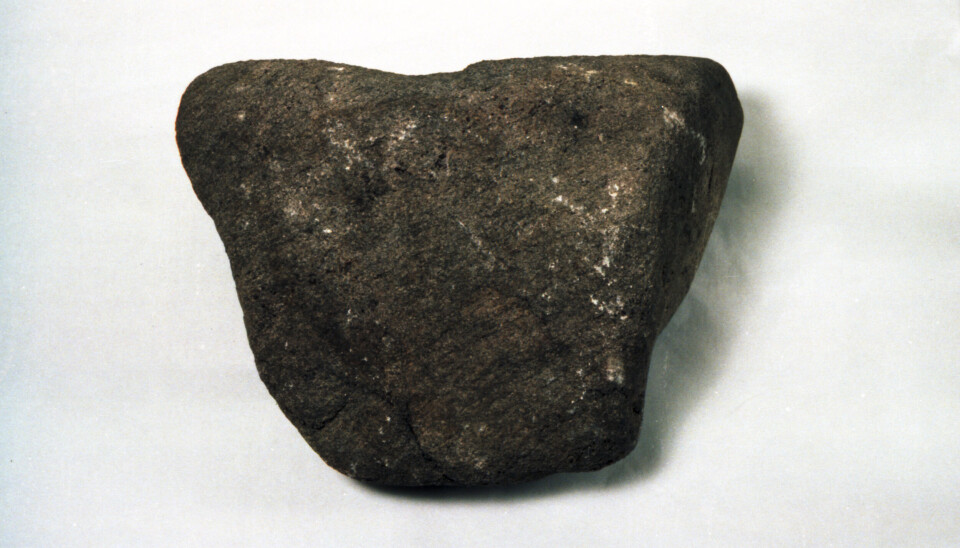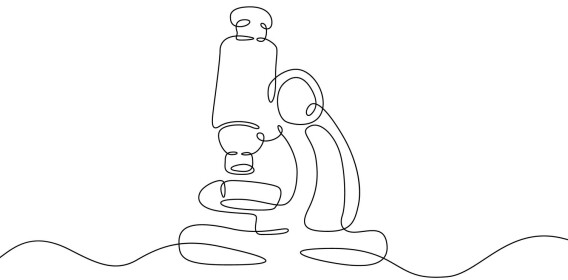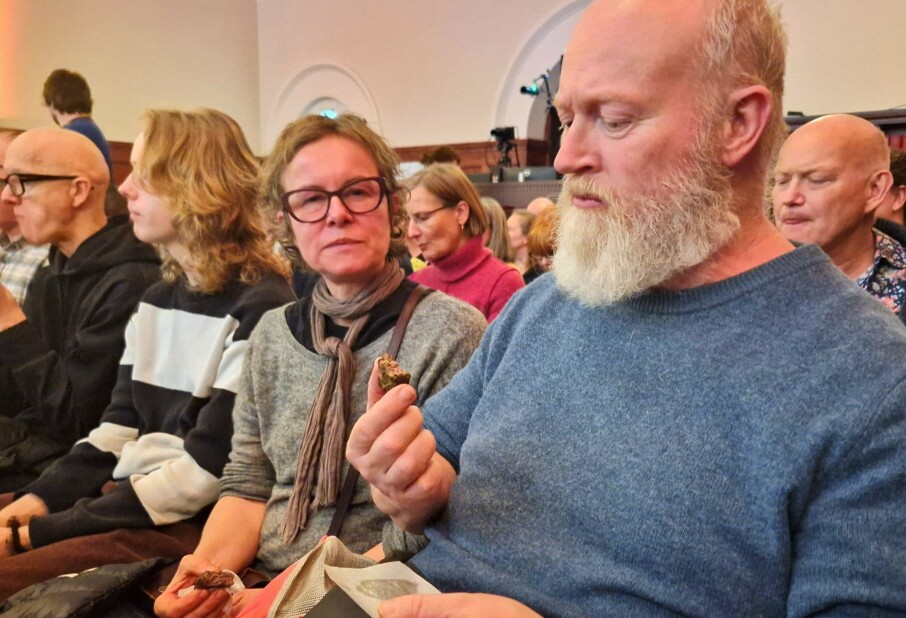Researchers were surprised when they turned over the stone in the Viking grave: It looked like female genitalia
"Such a clear symbol that even an old sceptic like me must acknowledge it," says the archaeologist.

It lay in a grave from the Viking Age.
The stone was discovered when archaeologist Søren Diinhoff and his colleagues from the University Museum of Bergen excavated three women's graves in the autumn of 2024. They found the stone in the middle of the grave, where the mast of a boat would have been.
When they turned the stone and saw its shape, they thought it symbolised a woman.
The stone looked like female genitalia. A vulva.
"The stone from the Skumsnes grave, I believe, is such a clear symbol that even an old sceptic like me must acknowledge it," says Diinhoff.
Quite a few stones that look like penises, so-called phallic stones, have been found. Now archaeologists believe they have found a vulva stone from the Viking Age at the Skumsnes farm in Western Norway.
"There can be no doubt"
Even though Diinhoff does not know of similar finds, he is certain.
"The grave is a stone setting in the shape of a ship, and this stone lies exactly where the mast and mast fish would have been. There's no doubt about the symbolism of the placement. And when we then turn the stone, it has a distinct groove. In a woman's grave, this can signify nothing other than the woman who is buried here. There can be no doubt about what the stone is meant to symbolise," he says.


Worship and genitalia
"It's not unlikely that vulva stones might exist," says Torun Zachrisson.
The Swedish archaeologist is head of research at the Uppland Museum.

"There are images of women, figurines made of gold and gilded bronze, which are associated with the world of gods," says Zachrisson.
One such figurine from the Danish island of Bornholm depicts a woman who may be in ecstasy, with overtly emphasised genitalia. The figurine is dated to around the year 500.
There are also wooden figurines of deities from Denmark and northern Germany in which the vulva is clearly visible.
"It's not unthinkable that such figurines are connected to the fertility goddess Freyja," says Zachrisson, adding:
"In pre-Christian society, there were always places associated with male or female gods, which were often marked by gender characteristics."
Far more phalluses exist
But there are significantly more phalluses than vulvas among this type of figurines, notes Zachrisson.
"The Late Iron Age, from around 550, is quite a patriarchal world, with a strong focus on masculinity and male gods. So while it’s possible that vulva stones existed, they were probably much less common than phallic ones – assuming they were connected to the divine,” she says.

The mentioned phallic stones are part of this, according to Zachrisson.
"There was a tradition of erecting stones on top of certain men's graves, while women's graves were marked with round stones called grave orbs," she says.
Fertility Cultivation
The phallic stones in Norway are most often dated to the early Iron Age, from around 500 up to the Viking Age. But the use of such stones may have continued into the Viking Age. Most agree that it was probably about cultivating fertility.
Many are found on or in graves, but there are also many finds on or near places used for religious rituals. Sometimes the stones naturally resemble a penis, other times they are carved.
But it's not always easy to see the resemblance to a phallus, writes archaeologist Frans-Arne Stylegar in an article. Some of them resemble more what the Swedes call grave spheres. These are rounder and flatter. But they are part of the same cultural tradition, Stylegar believes.
Studies have shown that these round stones are most often found in women's graves.

What are the round stones in women's graves?
Most viewed
On the island of Lovö in Lake Mälaren, Sweden, grave orbs have been found in half of the women's graves, archaeologist Bo Petré writes in a recently published report (link in Swedish).
He believes they represent female fertility, just as standing stones found in some other graves represent male fertility.
It is tempting to interpret the grave orbs from the Iron Age in light of goddess worship from the Late Bronze Age, writes Petré.
Or perhaps they represent eggs, which have symbolised rebirth, fertility, and eternal life across cultures and eras around the world?
Some grave orbs are decorated with a cross in the centre, with circles, or with other patterns. Some have interpreted them as symbols of bread or bread baskets.
According to Petré, it is likely that grave orbs in women's graves symbolise the ability to give life – something only women can do through childbirth.


Supports the interpretation: Likely a vulva

Swedish archaeologist Rebecka Jonsson recently participated in an excavation where a 7th-century grave contained both a clearly carved phallic stone and a grave orb.
"It has become something of an archaeological truth that stones interpreted as phalluses are linked to male graves, while grave orbs are linked to female graves," says Jonsson, adding:
"But often these are found in cremation graves, and it can be very difficult to determine the gender of burned bones. So it's a difficult theory to properly test."
She finds the discovery of a possible vulva stone in Norway very exciting.
"If you had seen the stone in a different context, you might not have thought of a vulva. But given that it lies in the middle of a grave like that, it really does seem like a fairly solid interpretation," says Jonsson.

The Skumsnes stone was likely not carved
The stone found at Skumsnes in Western Norway was probably not carved to look like a vulva.
But it was completely different from the other stones used to make the graves, says Diinhoff. Those stones are angular and were gathered nearby. The vulva stone is smoothly rounded and brought from far away.

That makes it more plausible that the stone actually symbolises a vulva, rather than it being a coincidence, according to the archaeologists behind the excavation.
"When we talk about graves like this, there's a lot we don't understand. But nothing is random," says Diinhoff.
A key difference from the phallic stones
Marianne Moen is the head of the Department of Archaeology at the Museum of Cultural History in Norway. She has done extensive research on gender perspectives in archaeology. But even she is not aware of other vulva stones.
In the 1990s, some researchers were more focused on vulva symbolism, Moen explains. For example, archaeologist Lil Gustafson argued that long barrows – oval burial mounds – should be interpreted as symbols of female genitalia.
But Moen is not entirely convinced by the vulva stone interpretation.
"I'm not saying it's not a valid and entirely possible interpretation, but that it's one that will be difficult to verify with confidence," she says.
Moen points out that the shape of the stone allows for many possible interpretations.
"That's perhaps the biggest difference compared to the phallic stones, which don't really allow for much alternative interpretation. They're quite clearly meant to look like what they look like, I'd say," she says, adding:
"It's certainly possible that we've overlooked vulva symbolism in favour of phalluses, which would be completely in line with our time's focus on males. Still, I don’t immediately think that what we’ve found here is the counterpart to the phallic stones."
Or is it an anchor?

Archaeologist Frans-Arne Stylegar tells sciencenorway.no that he, too, is not entirely convinced that the Skumsnes stone is a symbol of the woman in the grave.
He believes it's primarily a stone with symbolic significance, but suggests it might be a stone anchor – a type that has been found in other boat graves from the Viking Age.
Stylegar points out that phallic stones and similar artefacts are mostly from periods earlier than the Viking Age.
"When it comes to stones that resemble eggs or bread or similar shapes, I'm certainly open to the idea that such finds may represent female fertility," he says.

Time will tell if more are found
It would be great if we had some more vulva stones, notes Swedish archaeologist Zachrisson.
"Is this a one-time occurrence linked to a specific place, something unique connected to certain environments?" she asks.
"Time will tell whether more finds of the same kind appear. And if so, whether that means we've been overlooking something all along," she says.
———
Translated by Alette Bjordal Gjellesvik
Read the Norwegian version of this article on forskning.no
Related content:

Subscribe to our newsletter
The latest news from Science Norway, sent twice a week and completely free.



























































